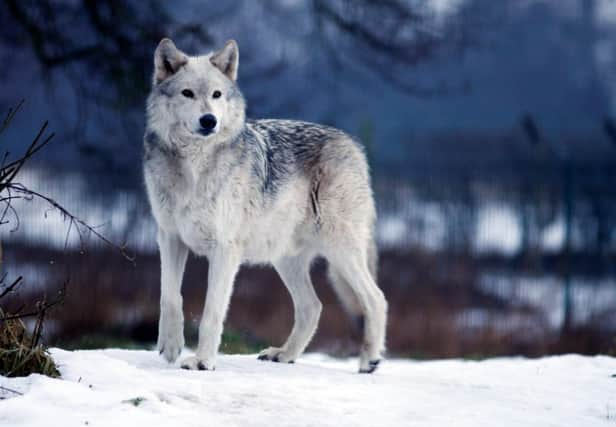‘Bad public image’ could stop Scottish wolf return


Campaigner Adam Watson Featherstone said fairy tales and werewolf movies perpetuated a “cultural stigma” around the animals.
He claimed other predators like the lynx might be easier to return to the Scottish wild because they don’t have the same “very bad public image” as wolves.
Advertisement
Hide AdAdvertisement
Hide AdHe said: “Wolves have always had a very bad public image, from Little Red Riding Hood, the Three Little Pigs to modern werewolf Hollywood films.
“People think they’re dangerous although they’re really not.
“The lynx would perform a similar function but does not have the same cultural stigma as the wolves.
“Top predators perform a vital part of the system and their absence in Scotland means a lack of regulation for natural prey.
“The lynx - already reintroduced to areas of Europe such as the Alps and Jura mountains - offers little threat to sheep.
“It is a specialist predator of roe deer, a species which has multiplied in Britain in recent years and which holds back the natural regeneration of trees through intensive browsing.”
The conservationist said that another animal species which should be more widespread in the north are red squirrels and wood ants.
Advertisement
Hide AdAdvertisement
Hide AdWork would also have to be done to allow forests to return to a more natural state under the “rewilding” vision.
It has been claimed that this could boost tourism as more visitors flock to see the creatures in their natural habitat.
He was joined on stage at the University of Edinburgh’s George Square Lecture Theatre on Tuesday by author George Monbiot, who recently published a book on the subject.
Mr Monbiot said: “Rewilding offers us a big chance to reverse destruction of the natural world, while rekindling wonder and enchantment that often seems missing in modern Britain.”
Their comments follow the decision in May for leading conservation group the John Muir Trust to support the reintroduction of wolves.
Mike Daniels, the trust’s head of land and science, said there is “no ecological reason” why the species should not return to the Highlands.
Wolves were hunted to extinction in the 1700s and their reintroduction has sparked a controversial debate in recent years.
A hunt attended by Queen Mary in 1563 employed 2,000 Highlanders and ended in the deaths of five wolves and 360 deer.
Advertisement
Hide AdAdvertisement
Hide AdThe remains of a wolf trap have also been found at Moy, near Inverness, dating from between the 16th and 18th centuries.
Animals killed near Brora, in Sutherland, in 1700 and another at Findhorn, in Moray, in 1743 were among Scotland’s last.
The lynx is thought to have died out in Scotland more than 1,000 years ago.
But Jamie Stewart, director of the Scottish Countryside Alliance, slammed the rewilding plan saying that Scotland should concentrate on its native wildlife.
He said: “I think the idea of bringing back large predators to the wild is incredibly romantic but hasn’t been fully thought through.
“We are struggling to maintain numbers of species like the Scottish wildcat already and introducing new animals can only weaken those efforts.
“These animals often died out for a reason and they are unlikely to be practical when reintroduced to a modern country like Scotland.
“When they’ve been brought back in other parts of Europe there has been a sharp increase on attacks on livestock.
Advertisement
Hide AdAdvertisement
Hide Ad“Essentially it’s just an idea to boost tourism and turn Scotland into something akin to a theme park.”
The plan has also come under fire from farmer’s union NFU Scotland.
Highlands regional representative Ian Wilson, 47, farms sheep and cattle near Nairn.
He said: “Personally I think it’s a bad idea for two reasons- firstly it will affect people’s access to the countryside.
“It could really impact on the Highland tourism industry, that’s so dependent on walkers, to have these animals running wild.
“It could put people off the idea of a walking holiday.
“Secondly it could have a devastating effect on farmer’s livestock.
“They would be fenced in on farms and already less able to deal with attacks because they don’t have the instincts to defend themselves or run away.
“When you look at wolves in North America they can travel for miles and miles at a time.
Advertisement
Hide AdAdvertisement
Hide Ad“Scotland is only a small country so even if you introduce them into the Highlands there is no guarantee they’ll stay there.
“It’s a problem for everyone- even in the cities.”
SEE ALSO